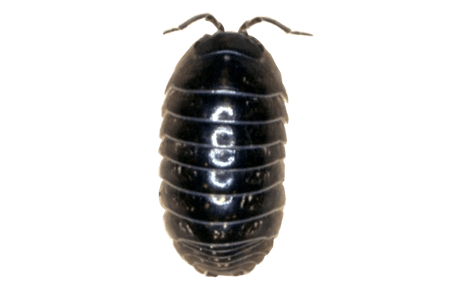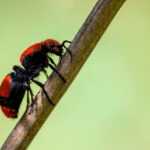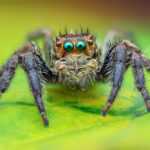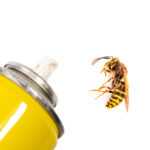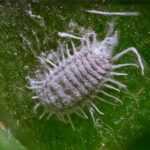Like many residents in or around Seattle, you may find a gray, pill-shaped creature creeping through your yard, garden, or home. From “roly-poly” to “doodlebug,” there are plenty of names used to describe this critter.
However, what you think is a pillbug may actually be a sowbug, a similar but separate species. Curious to learn the difference between the two, and why they may wander into your home? Trust PURCOR to help you discover if you’re dealing with pillbugs or sowbugs.
Pillbugs and sowbugs can often be found in crawl spaces due to the damp conditions. Ventilating these spaces to reduce moisture levels is crucial for preventing nuisance pests from establishing populations inside homes. While these creatures primarily feed on decaying material, they can cause significant damage to young seedlings when their populations are high.
Regardless of which species has sneaked into your Washington home, no one wants to find pests in or around their living space. If you have any questions or concerns about a potential pillbug or sowbug infestation, contact our pest experts today.
Despite their names, these two creatures aren’t “bugs” at all. In fact, they’re considered isopods, or non-insect arthropods. Other examples of non-insect arthropods include millipedes, centipedes, and even shrimp. Both sowbugs and pillbugs are officially known as “woodlice,” as they’re often found under fallen logs or other wooden materials.
Sowbugs and pillbugs are gray, oval-shaped, and measure about a centimeter in length. Each almost resembles an armadillo, as they’re covered in armored plates that mimic those of the large mammal.
Similarly to their distant relatives, the millipedes and centipedes, pillbugs and sowbugs prefer dark, cool areas—such as under leaves, logs, or rocks. Occasionally, they may wander into your garden, basement, or garage.
Biology and Identification
Pill bugs and sow bugs are fascinating terrestrial crustaceans that belong to the order Isopoda. Unlike insects, these creatures have adapted to life on land while retaining some crustacean characteristics. When viewed from above, both pill bugs and sow bugs have oval bodies, seven pairs of legs, and antennae that extend about half their body length. Typically brown or gray, they range in size from ¼ to ½ inch long.
One of the most distinctive features of pill bugs is their ability to roll into a tight ball when disturbed, a behavior that has earned them the nickname “roly-polies.” In contrast, sow bugs cannot perform this trick and instead have two tail-like appendages visible at the end of their bodies. These subtle differences can help you identify which type of woodlouse you’re dealing with in your home or garden.
Managing the soil surface moisture is crucial to deter these pests in gardens and greenhouses.
How can you tell pillbugs and sowbugs apart by their seven pairs of legs?
If you’re wondering the difference between pillbugs and sowbugs, you’re not alone. Due to their similar appearance, telling them apart at a glance is nearly impossible, but there are a couple of telltale signs.
First, only pillbugs can curl into balls. If you poke an unidentified woodlouse and it scuttles away instead of curling up, you’ve likely found a sowbug. Secondly, sowbugs have more jagged edges around their armored plates and have two tail-like appendages at the ends of their bodies. Still not sure what kind of woodlouse you’ve discovered in your home? Give PURCOR a call; we’ll gladly help identify your pest.
Habitat and Diet
Pill bugs and sow bugs thrive in a variety of habitats, from gardens and forests to backyards. They are particularly fond of high-moisture conditions and are often found hidden under organic litter, plant debris, or other debris on the ground. You might also spot them beneath low-growing plant parts where the environment is damp and cool. These pests can cause significant damage to young seedlings when their populations are high.
Their primary diet consists of decaying plant material, which makes them important decomposers in the ecosystem. However, they occasionally feed on young plants, seedlings, and vegetables that come into contact with damp soil. They are also known to nibble on fruit and succulent plant parts, although this is less common. Managing soil surface moisture is crucial to deter these pests, as minimizing water retention on the soil surface can help reduce their breeding sites.
Life Cycle and Development
The life cycle of pill bugs and sow bugs begins with life cycle eggs, which the female lays and carries in a brood sac beneath her body. These eggs hatch after about a month into young pill bugs and sow bugs, which remain in the pouch for up to two months before venturing out on their own. It takes about a year for them to grow to maturity, and they primarily breed in the spring.
Pill bugs and sow bugs can live up to three years and may produce up to three broods in their lifetime. As beneficial species, they play a crucial role in breaking down decaying plant matter and recycling nutrients back into the soil, contributing to a healthy ecosystem.
Are pillbugs and sowbugs dangerous?
Pillbugs and sowbugs are completely harmless, as they cannot bite or sting. Additionally, they can’t chew on wood, spread diseases, or damage your belongings. They can, however, become a nuisance by infesting the damp wooden structures in your basement or garage. Sowbugs and pillbugs eat decaying plant matter and occasionally living plants but cannot seriously harm your garden or houseplants.
Behavior and Defense
Pill bugs and sow bugs are primarily nocturnal creatures, meaning they are most active at night. During the day, they tend to hide in dark, moist areas such as under rocks, logs, or plant debris. This behavior helps them avoid predators and stay hydrated, as they require high moisture conditions to survive.
When it comes to defense, pill bugs have a unique trick up their sleeve. They can roll into a tight ball, using their flexible exoskeleton to protect themselves from predators. This ability has earned them the nickname “roly-polies.” On the other hand, sow bugs lack this capability. Instead, they rely on their speed and agility to escape danger, scuttling away quickly when disturbed.
Both pill bugs and sow bugs are terrestrial crustaceans, meaning they live on land but still need a certain level of moisture to thrive. You’ll often find them in crawl spaces, basements, and areas with abundant plant debris. In these environments, they feed on decaying plant material, playing a crucial role in breaking down organic matter and recycling nutrients back into the soil.
In addition to their feeding habits, pill bugs and sow bugs serve as a food source for other animals, such as birds, reptiles, and small mammals. This makes them beneficial species within the ecosystem, helping to control pest populations by consuming decaying plant matter.
Tips for Preventing Pillbugs and Sowbugs in High Moisture Conditions
As unwanted guests in search of damp wood to call home, the best way to prevent sowbugs and pillbugs from invading your home is to keep it dry. From having a proper drainage system around your foundation to using a dehumidifier or fan in your basement, preventing moisture can help stop these nuisances and more serious pests (like cockroaches) from wandering onto your property. Reducing decaying organic matter and moisture can also help control pill bug populations.
Minimizing water retention on the soil surface by watering plants in the early morning and reducing organic matter is also important.
In addition, ensuring that your home is properly sealed is crucial to preventing pests of any kind from scuttling or scurrying their way indoors. Be sure to seal cracks and holes around windowsills, doors, and even air vents to avoid potential infestations.
Not sure where to begin with sowbug- and pillbug-proofing your home? Request a free evaluation from one of our experienced pest control pros.
Environmentally-Friendly Pest Control from PURCOR for Decaying Plant Material
As local pest control experts, we understand how critical it is to protect our friends and neighbors from pests without harming the environment. When you choose our effective residential or commercial pest control solutions, you’ll enjoy the peace of mind that only comes from professionals committed to eliminating unwanted guests without negatively impacting the environment.
From placing traps and monitors to creating undesirable conditions in and surrounding your home, we do everything we can to get rid of and prevent pests while using as little pesticide as possible. Whether you’re dealing with pillbugs, sowbugs, or another kind of pest in the Seattle metropolitan area, PURCOR has got you covered. Start living pest-free in Washington state today—request your free pest control quote today!
"*" indicates required fields
"*" indicates required fields
